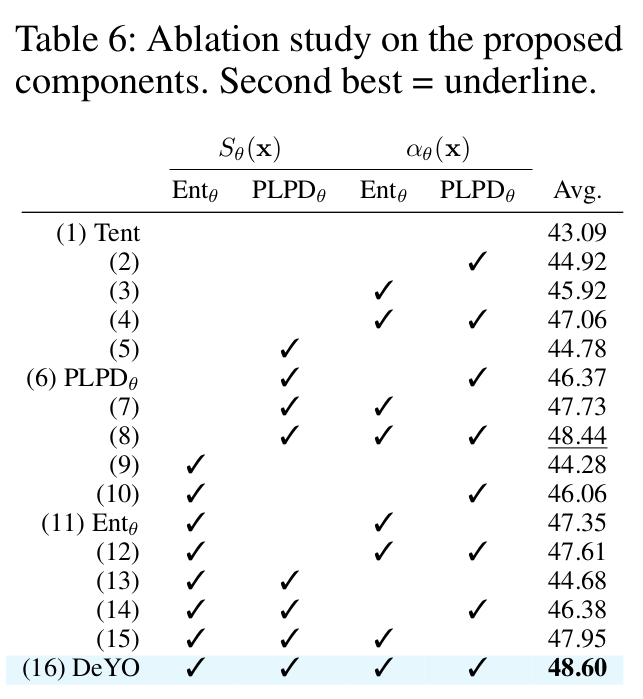[TTA][CLS] DEYO: Entropy is Not Enough for Test-Time Adaptation : From the Perspective of Disentangled Factors
[TTA][CLS] DEYO: Entropy is Not Enough for Test-Time Adaptation : From the Perspective of Disentangled Factors
- paper: https://openreview.net/pdf?id=9w3iw8wDuE
- X
- ICLR 2024 in review (인용수: 0회, ‘23.12.13 기준)
- downstream task : TTA for CLS
1. Motivation
-
TTA에서 entropy를 사용해서 sample을 adaptation할지 판단하는 confidence metric으로 활용함
-
하지만, biased scenario (spurious correlation)에서 entropy는 unreliable한 양상을 나타냄을 발견
-
biased scenario : waterbird dataset
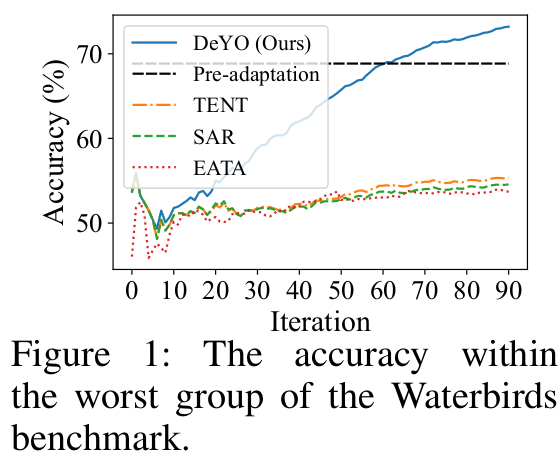
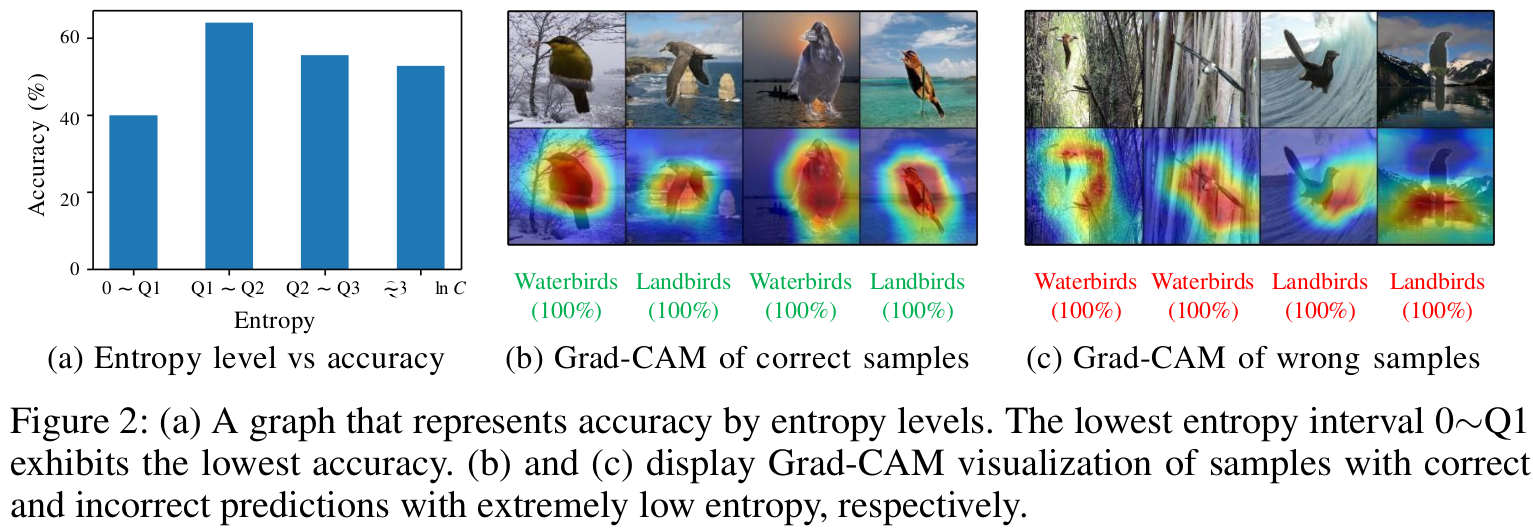
-
waterbird class : 배경이 물에서 95% 나타남. 배경이 땅에서 5% 나타남
-
landbird class : 배경이 땅에서 95% 나타남. 배경이 물에서 5% 나타남
- waterbird, landbird를 학습하는데 필요한 (CPR: Commonly Positively-coRelated) factor 보다, 배경과 같은 (TRAP: TRAin-time only Positively-corelated) factor로 학습을 하게되어 그러함.
-
validation은 spurious correlation이 안된 데이터셋으로 검증 수행
-
Entropy기반으로 학습 시, 성능이 떨어짐. 틀린 원인 분석 (Grad-CAM)결과 배경을 보고 판단했기 때문 (DG에서 Multi-View Discrimantor의 causal, non-causal과 개념이 비슷해 보임)
-
-
2. Contribution
- Entropy만 가지고 confidence metric으로 삼기엔 불충분함을 보임
- harmful sample을 identify하는 새로운 confidence metric인 PLPD (Pseudo Label Probability Difference)기반의 DeYO (Destroy Your Object)를 제안함
- 여러 TTA benchmark에서 SOTA
3. DeYO
-
Overview
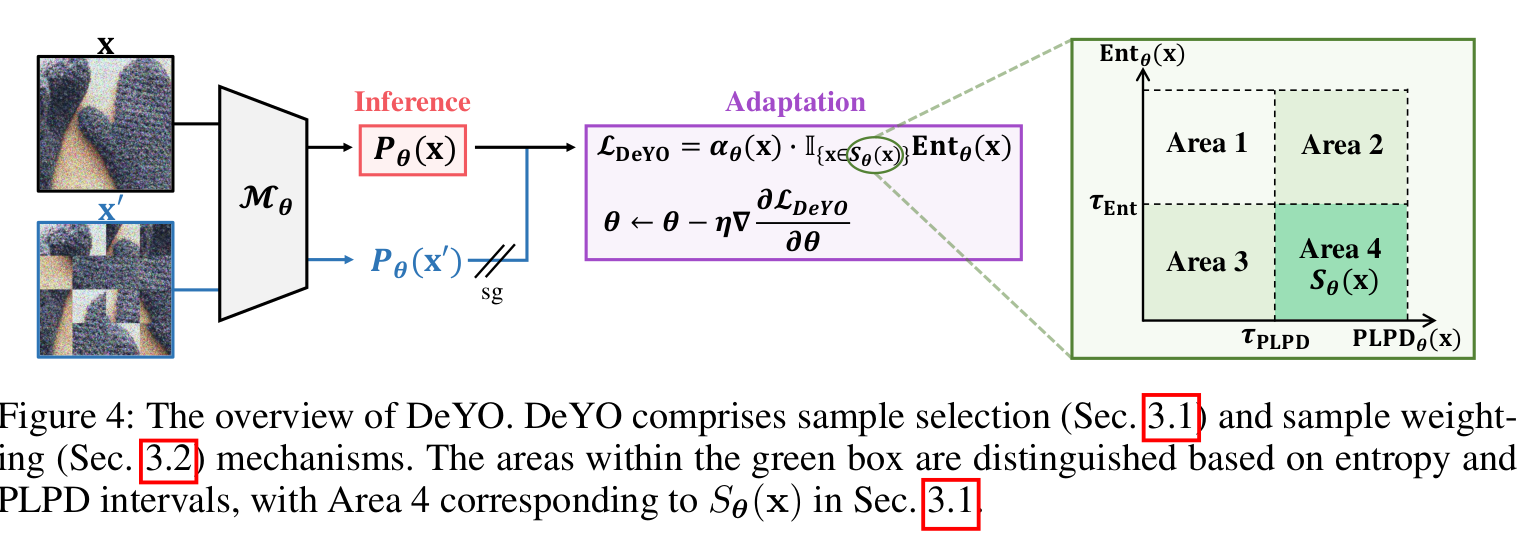
- 4사분면에 해당하는 sample만 selection해서 adaptation하고자 함
3.1 Entropy is Not Enough
-
Entropy


-
Disentangled Latent Vector v(x)
-
train, test set에 대해 CPR factor, TRP factor를 정의한 가상의 vector

-
CPR에 해당하는 latent vector $v_{pp}$ : train set, test set 모두에서 CPR factor. ex. object shape, object pattern, etc
-
TRP에 해당하는 latent vector $v_{pn}, v_{np}, v_{nn}$
- $v_{pn}$: trainset 에서는 CPR인데 testset에서는 TRP factor. ex. water background
- $v_{np}$: trainset 에서는 TRP인데 testset에서는 CPR factor ex. land background
- $v_{nn}$: trainset 에서는 TRP이고 testset에서도 TRP factor ex. image aspect ratio?




-
-
CPR factor 판단 기준
- 여기서는 CPR인지 여부를 test label $y^{test}$와의 correlation이 0보다 크면 CPR라고 함
- Appendix를 살펴보면 linear classifier 대해 probability score가 0.5 이상이면 CRP, 미만이면 TRP로 처리하는 이진 분류기를 정의함

-
$a_{\theta}$: sigmoid 통과 전 linear classifer의 output. 이 값이 양수란 것은 CPR과 양의 상관관계를 갖는다는 의미
- $M_{\theta}$: disentangled latent vector v를 입력으로 하는 linear classifier. TTA에서는 DNN 모델에 해당.
- $\theta$: learnable parameters
- $\hat{y}$: input $x$에 대해 disentangled latent vector v와 linear classifier간의 similarity를 pseudo label로 표현한 값. probability score가 0.5보다 크면 1, 작으면 -1
-
-
Harmful sample 판단 기준

-
$X^{test}_{+1}$: test dataset X에서 CRP factor를 보존한 이미지
-
$X^{test}_{-1}$: test dataset X에서 CRP factor를 훼손한 이미지
-
Appendix의 증명: CPR 을 판단할때 사용한 $p_{\theta}$에 대해 entropy를 계산하고, model weight를 두 pseudo label class간의 discriminality를 가깝게하므로 위 (5)식을 만족하면 harmful하다고 판단함
-
$\theta_{pp}$를 제거하기 전 (1)과 후 (-1)로 나타낼 수도 있음

-
3.2 Sample Selection
-
Spurious Correlation 이 높은 경우, entropy기반의 sample selection은 TRAP factor에 영향을 받게 되므로 reliable하지 않다.
-
때문에 본 논문에서는 CPR factor중 하나인 “shape”에 따른 영향을 받게하는 PLPD (Pseudo Label Probability Difference)를 제안한다.

- $\hat{y}$: pseudo-label. argmax취한 값.
-
PLPD를
 로 나타낼 수도 있음
로 나타낼 수도 있음 -
$\tau_{ent}$: entropy threshold
-
$\tau_{PLPD}$: PLPD threshold
-
$x’$: shuffled image. 즉 CRP factor중 하나인 “object shape”를 destroy함으로써 변형전과 prediction score 차이를 극명하게 나타내고자 사용

- $x$: original image
3.3 Sample Weighting
-
Reliablity에 따라 각 single sample 마다 weight를 조정함. 즉, more reliable한 sample에 weight를 많이 줘서 학습하고자 함

- $\alpha_{\theta}$: weight for image x
- $Ent_0$: entropy normalization factor. hyper-parameter
-
DeYO Loss

-
DeYO Algorithm
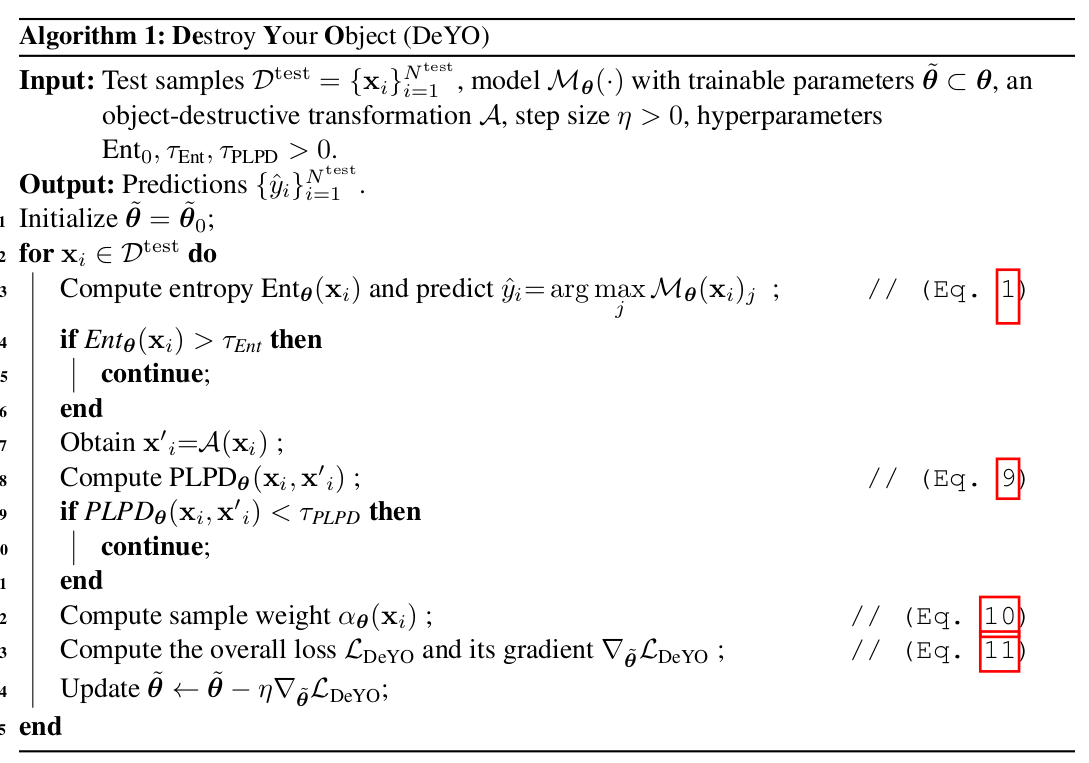
4. Experiment
-
ImageNet-C
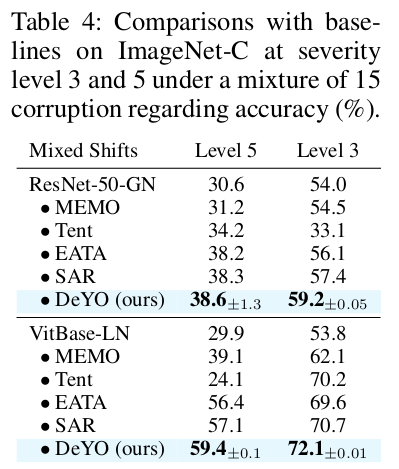
-
Wild-Scenario
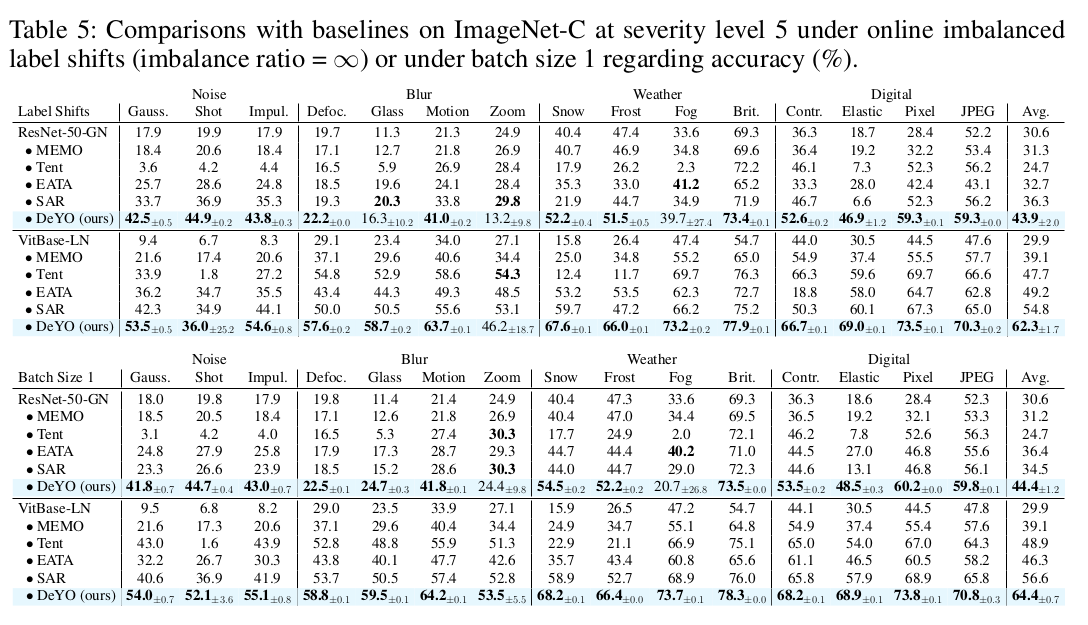
-
Risk Coverage Curve
-
rejection은 적게하면서, risk (error)는 최소화하는 (우측 하단) 모습이 좋음
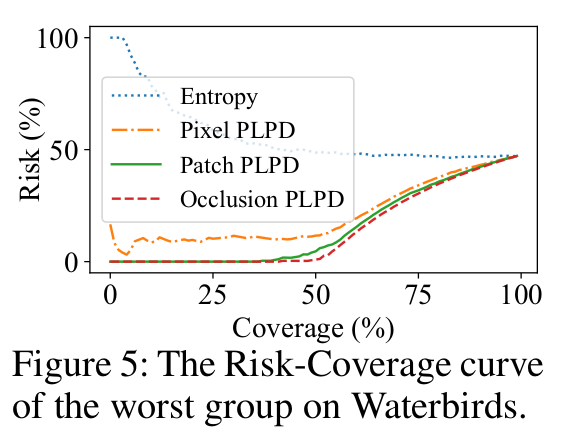

-
-
Hyperparameter

-
Ablation Study
